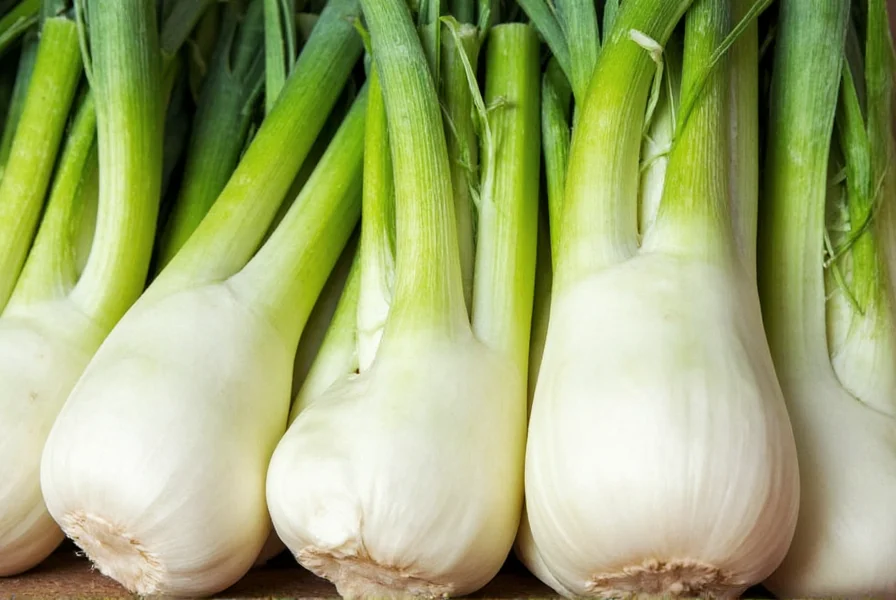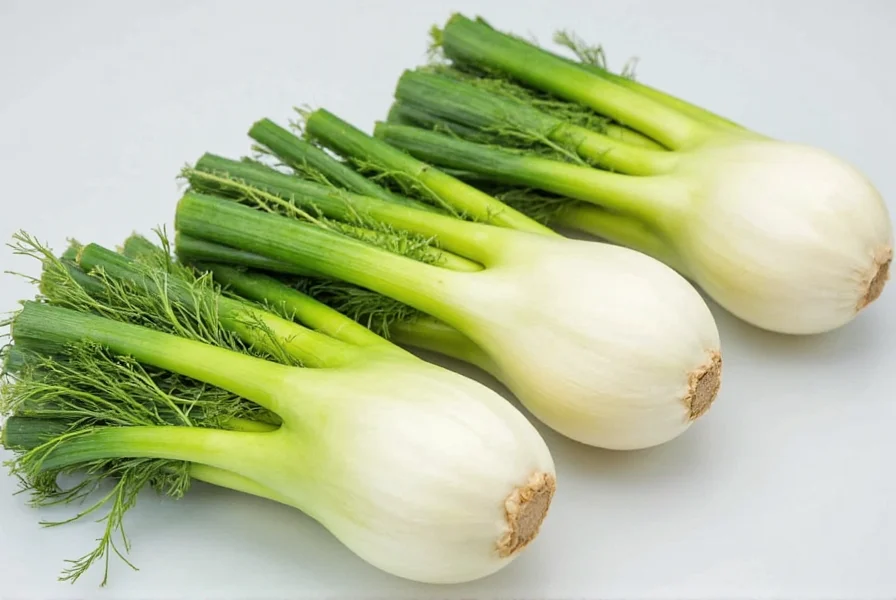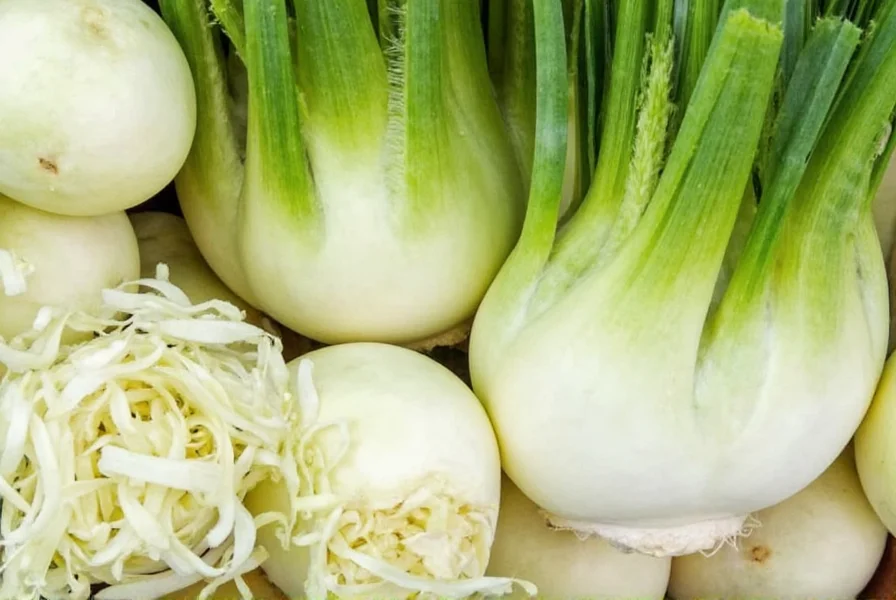Fennel (Foeniculum vulgare) stands as one of the most versatile vegetables in culinary applications, yet many home cooks remain uncertain about how to properly handle this unique ingredient. Understanding fresh fennel begins with recognizing its distinctive characteristics: a white or pale green bulb with a slightly sweet, licorice-like flavor that mellows beautifully when cooked. Unlike dried fennel seeds which concentrate the flavor, fresh fennel offers a more subtle, complex taste profile that enhances both raw and cooked dishes.
Identifying Quality Fresh Fennel at Purchase
When selecting fresh fennel at your local market, look for firm, heavy bulbs with no cracks or browning. The ideal specimen should feel dense for its size, indicating proper hydration. Crisp, vibrant green fronds signal recent harvest, though these can be removed without affecting bulb quality. Avoid specimens with split bulbs or yellowing spots, which indicate age or improper storage. Peak fennel season runs from fall through early spring, when bulbs reach optimal size and flavor.

Proper Storage Techniques for Maximum Freshness
Correct storage dramatically extends fresh fennel's shelf life. Begin by removing any rubber bands or ties constricting the bulb. For short-term storage (3-5 days), place the whole bulb in a perforated plastic bag in your refrigerator's crisper drawer. For longer preservation (7-10 days), wrap the bulb in a slightly damp paper towel before placing it in a loosely sealed plastic bag. Never wash fennel before storage, as excess moisture accelerates spoilage. The fronds should be stored separately in a glass of water like fresh herbs.
| Storage Method | Duration | Quality Preservation |
|---|---|---|
| Whole bulb in perforated bag | 3-5 days | Good texture, mild flavor loss |
| Bulb wrapped in damp paper towel | 7-10 days | Excellent texture and flavor retention |
| Cut bulb in airtight container | 2-3 days | Rapid texture degradation |
Step-by-Step Preparation Guide
Preparing fresh fennel properly unlocks its culinary potential. Start by trimming the root end and removing any tough outer layers. Cut the bulb vertically through the core for even slices. For salads, thinly slice the raw bulb using a mandoline for consistent thickness. When cooking, the core can remain intact for roasting or grilling, but should be removed for braising or purees. Don't discard the feathery fronds—they make an excellent garnish or can be finely chopped and added to vinaigrettes. The stalks work well as a base for poaching fish or poultry.
Culinary Applications Across Cooking Methods
Fresh fennel's versatility shines across various cooking techniques. Raw, it adds refreshing crunch to salads and slaws, pairing beautifully with citrus, apples, and walnuts. When roasted, the natural sugars caramelize, transforming its flavor into something reminiscent of mild onions with subtle sweetness. Braised fennel becomes meltingly tender, perfect for side dishes or as a bed for proteins. In soups and stews, it provides aromatic depth without overpowering other ingredients. Professional chefs often use the entire plant—bulb in main dishes, fronds as garnish, and seeds for seasoning—to minimize waste and maximize flavor.

Nutritional Profile and Health Considerations
Nutritionally, fresh fennel offers impressive benefits with minimal calories. One cup of sliced raw fennel contains just 27 calories while providing 14% of your daily vitamin C needs, 10% of potassium, and 11 grams of dietary fiber. It contains flavonoids with antioxidant properties and anethole, the compound responsible for its distinctive flavor, which research suggests may have anti-inflammatory effects. Unlike fennel seeds which concentrate certain compounds, fresh fennel provides these benefits in a more balanced, food-based form without the potency concerns sometimes associated with supplements.
Troubleshooting Common Fresh Fennel Issues
Many cooks encounter challenges with fresh fennel. If your fennel develops a tough, woody texture, it was likely past its prime when purchased or improperly stored. Browning on cut surfaces occurs naturally due to oxidation but doesn't affect safety—simply trim affected areas. For those sensitive to the licorice flavor, pairing fennel with acidic ingredients like lemon juice or vinegar helps balance the taste. When substituting dried fennel seeds for fresh, remember that one tablespoon of seeds equals approximately one whole bulb, but the flavor profile differs significantly.
Frequently Asked Questions
Can you eat the entire fresh fennel plant?
Yes, all parts of fresh fennel are edible. The bulb serves as the primary vegetable component, the feathery fronds function as a fresh herb similar to dill, and the stalks work well as a cooking base for proteins. Even the small flowers are edible and make attractive salad garnishes.
How can you reduce the licorice flavor of fresh fennel?
To mellow fresh fennel's characteristic anise flavor, try cooking methods like roasting or braising which transform its natural sugars. Pairing with acidic ingredients such as lemon juice or vinegar also balances the flavor profile. For raw applications, soaking sliced fennel in cold water for 10-15 minutes can reduce intensity while maintaining crunch.
What's the difference between fresh fennel and Florence fennel?
Florence fennel is simply another name for the bulb variety of fennel commonly sold as fresh fennel in markets. The term distinguishes it from wild fennel or fennel grown specifically for seed production. All culinary fennel belongs to the same species (Foeniculum vulgare), with Florence fennel cultivated for its enlarged, edible bulb.
Can you freeze fresh fennel for later use?
Yes, though freezing changes the texture. Blanch sliced fennel bulbs for 2 minutes, cool in ice water, then freeze on a baking sheet before transferring to airtight containers. Frozen fennel works best in cooked applications like soups and stews, not raw dishes. The flavor remains intact for 8-12 months, though texture becomes softer after thawing.
What vegetables pair well with fresh fennel in recipes?
Fresh fennel complements citrus fruits, apples, pears, and stone fruits in raw preparations. When cooked, it pairs beautifully with potatoes, carrots, onions, and tomatoes. Protein pairings include salmon, chicken, pork, and white beans. Classic herb combinations feature thyme, rosemary, and parsley, while spices like coriander and black pepper enhance its natural flavors.











 浙公网安备
33010002000092号
浙公网安备
33010002000092号 浙B2-20120091-4
浙B2-20120091-4